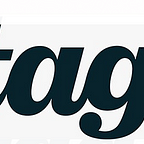COVID-19 Will Change Language as We Know It
We’ve all felt the far-reaching effects of COVID-19 over the last several months, as nationwide lockdowns, shifting work-from-home policies, and unusually dangerous circumstances for essential workers have taken our daily routines and swiftly flipped them on their heads. It finally seems like the dust is starting to settle, which we’re seeing reflected in policy as states and countries begin to reopen. But as the more immediate dangers start to fade away, permanent changes caused by the pandemic are coming into focus.
From a business perspective, it’s been interesting to observe how brands have responded to the outbreak — many totally pivoting their marketing strategies to directly address changes in consumer behavior. In order to stand out, companies are learning to use unique wording instead of recycling the same language that’s being parroted across media outlets (we’ve all read the phrase “unprecedented times” enough over the past three months!). Most vital is remaining empathetic and down to earth, staying away from anything that might carry negative connotations or be perceived as offensive. In this vein, we’ve already noticed clients refraining from using sickness-adjacent expressions like “laughter is contagious” or “avoid it like the plague,” for obvious reasons, and expect this trend to continue for the foreseeable future.
This is just one of the effects we’ve noticed so far in the advertising sphere, but COVID-19 will also leave a permanent mark on everyday language. Once rarely used, phrases like “quarantine,” “social distancing,” and “flattening the curve” have established themselves firmly in our vernacular and are now part of everyday conversations. An article in the New York Times notes that the term “face mask” previously brought to mind an at-home skin care treatment but now evokes the ubiquitous coverings we wear when going outside — a simple shift, but one that may be significant for the cosmetics industry, which will want to steer clear of any associations with the virus.
In an even broader sense, societal changes brought about by this coronavirus may affect the languages we speak for years to come. With many companies offering extremely flexible (even permanent) work-from-home policies, we’ll be spending more time inside with family, and that will change our habits dramatically. More free time may encourage people to pick up a second or third language — to that end, downloads of the popular language-learning app Duolingo have surged over the past few months. Furthermore, parents may be more motivated to raise bilingual children as they’ll have increased opportunities to talk to their kids at home in their mother tongue. As this piece notes, since we’ll be doing more of our communication from our places of residence, “only . . . regional languages that adapt to the transformations [will] be able to survive.” This may mean a return to a more local focus, with increased efforts to revive lesser-spoken tongues as people find themselves with more spare time (and perhaps a generally more sentimental disposition caused by the devastating effects COVID-19 has had in many immigrant and minority communities). Conversely, it’s possible these languages will die out more rapidly due to fewer gathering places where older speakers can congregate.
Language is one of the most important distinctions that sets human beings apart from our animal brethren; it’s how we cry for help, profess love, and do business. It’s only natural that a global event like COVID-19 would change the way we think and speak. Will regional languages flourish or flounder? What other new terminology will make its way into our everyday speech? How else will consumer behaviors shift, and how will brands continue to respond? Only time will tell how long and how deep the effects turn out to be, but we’re ready to adapt come what may.
